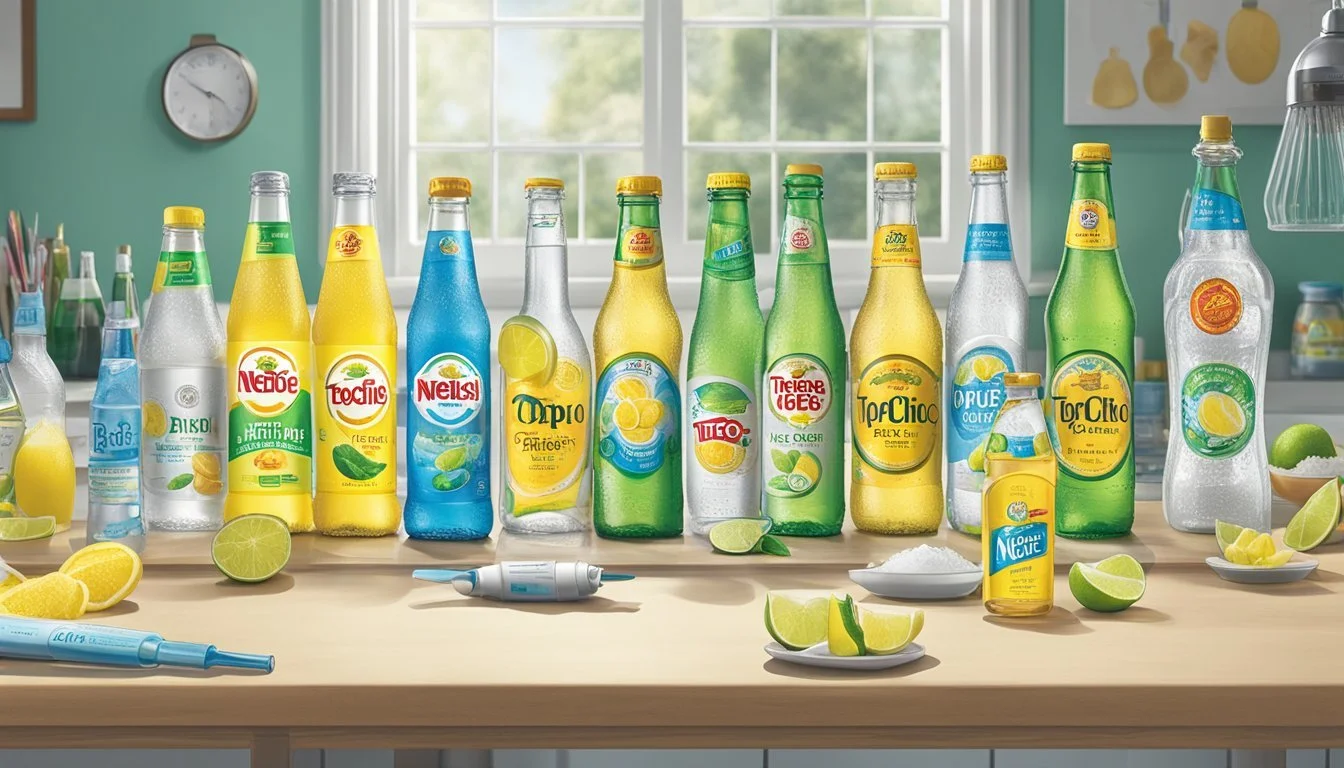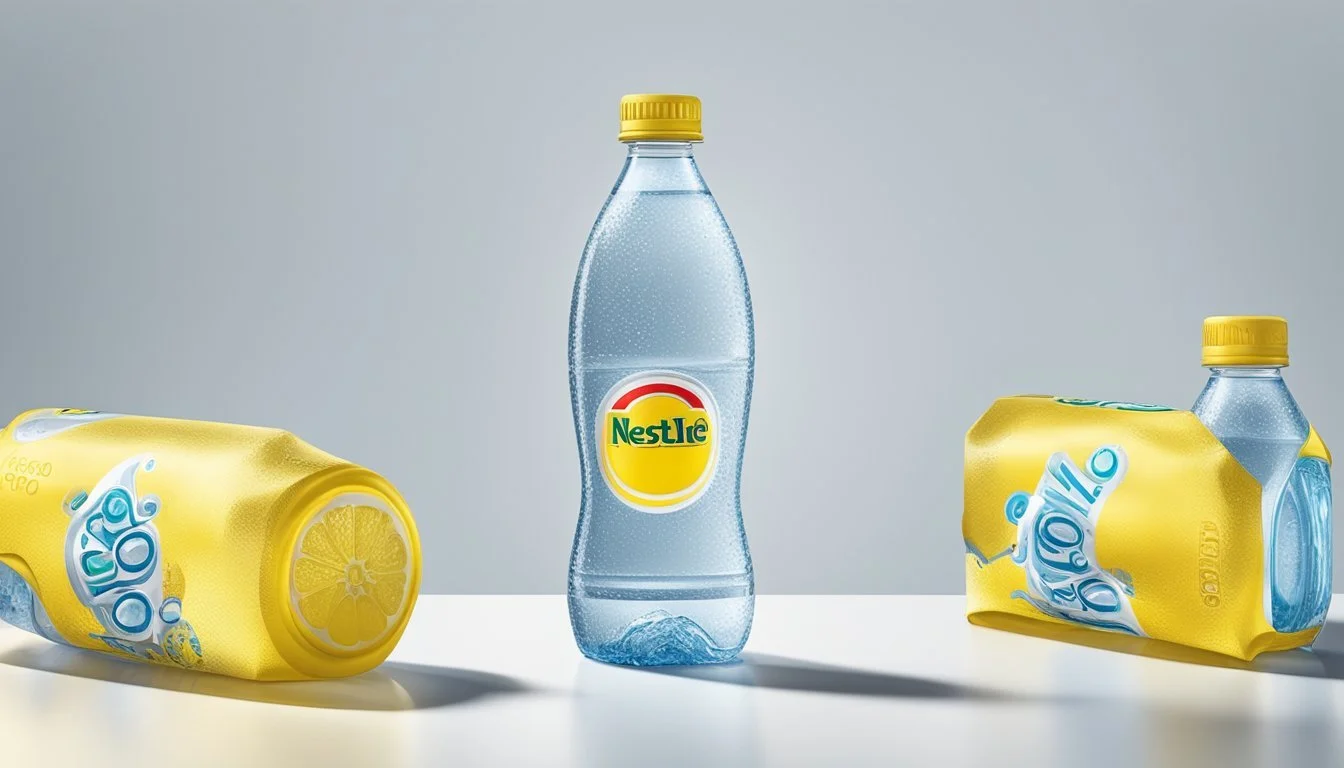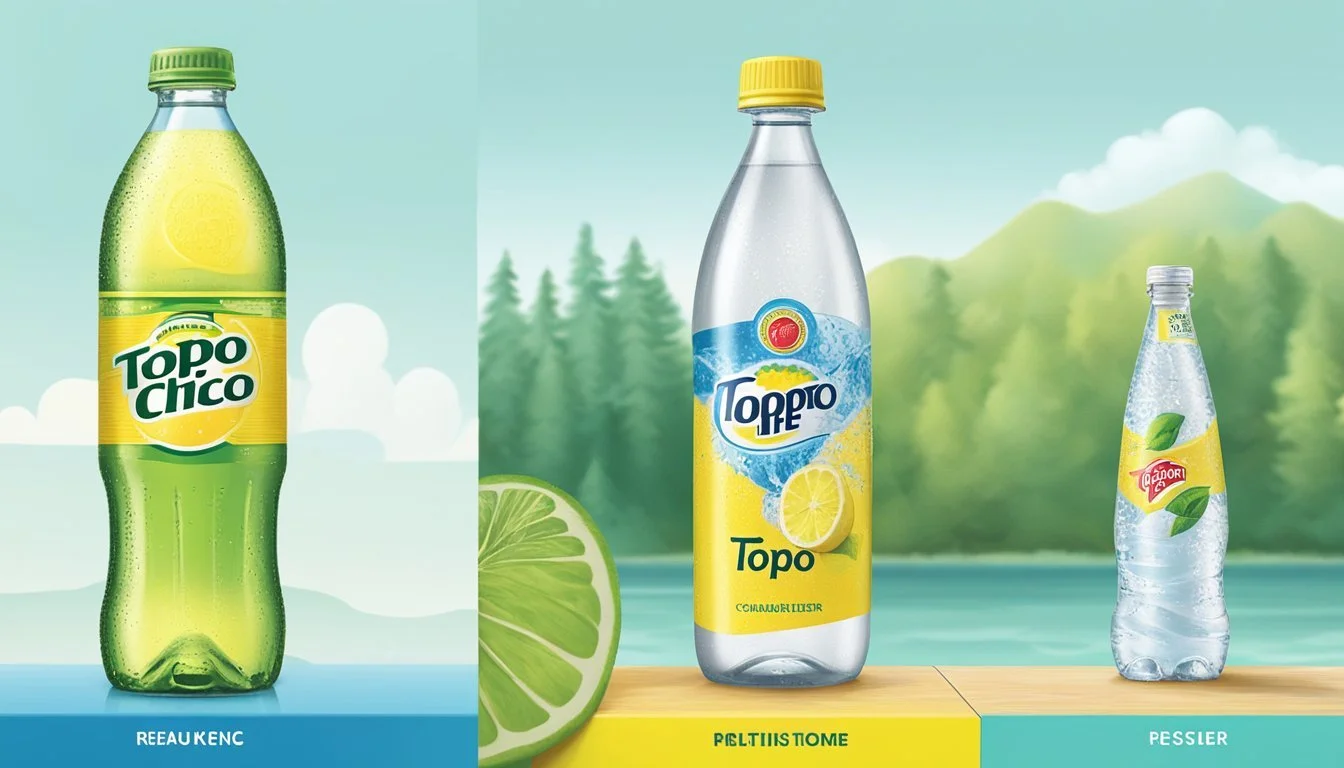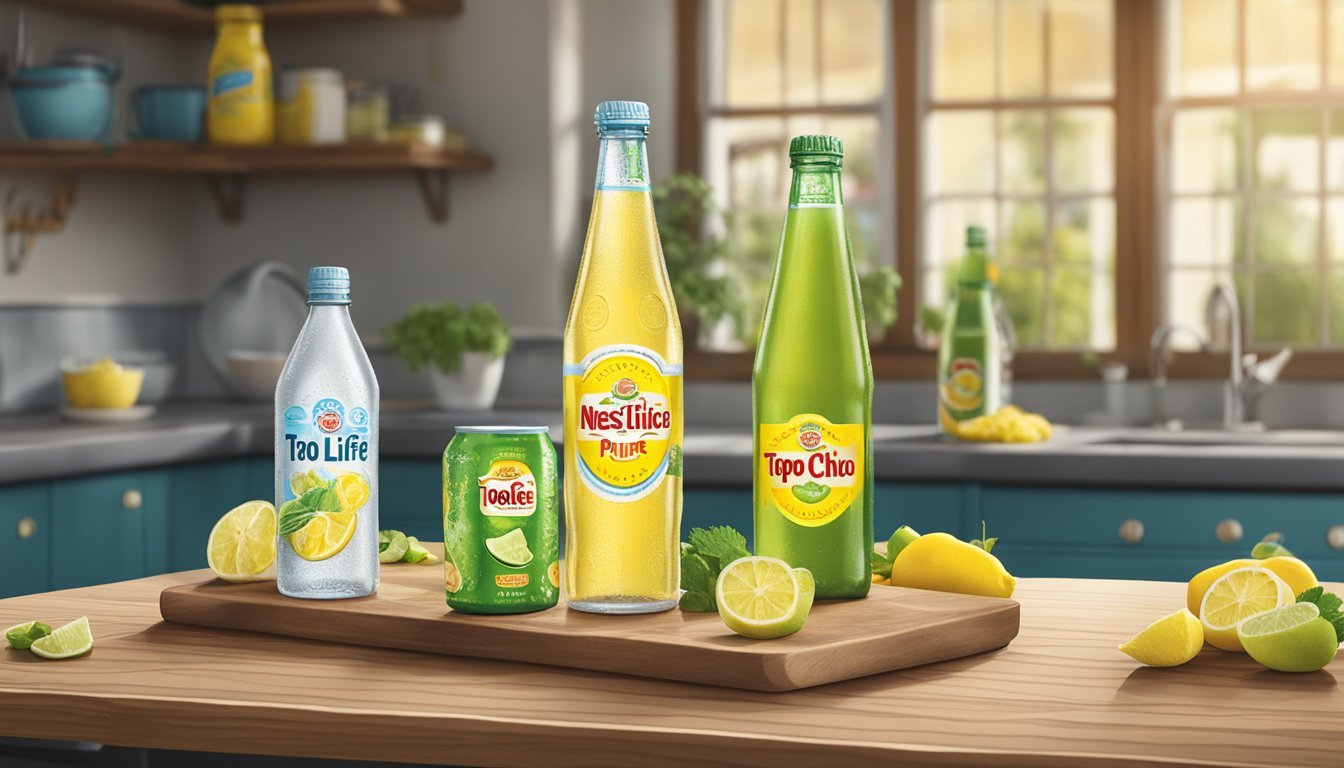Nestlé Pure Life vs. Topo Chico
A Comprehensive Bottled Water Comparison
Bottled water preferences often boil down to taste, mineral content, and the source of the water. Nestlé Pure Life and Topo Chico represent two distinctive options in the bottled water market. Nestlé Pure Life, widely available and produced by the world's largest food and beverage company, Nestlé, offers purified water that's been filtered and has added minerals for taste. By contrast, Topo Chico, sourced from springs in Mexico, is a sparkling mineral water lauded for its natural effervescence and crisp taste.
Consumers seeking hydration have a growing plethora of choices, and water purity, the presence of minerals, and flavor nuances play significant roles in their decisions. Nestlé Pure Life is advertised as a healthy, everyday choice for families, undergoing rigorous purification processes to ensure consistency in safety and taste. Topo Chico's allure lies in its unique mineral composition and its long history, having been bottled since 1895, giving it a legacy appeal along with its characteristic carbonation.
While both brands have a strong following, the decision between Nestlé Pure Life and Topo Chico may also hinge on environmental factors and the social impacts of the companies behind them. With sustainability and corporate responsibility increasingly influencing consumer behavior, bottled water is more than just a simple beverage choice; it reflects personal values and lifestyle preferences.
Understanding Bottled Water
When consumers consider purchasing bottled water, they encounter a spectrum of options: spring water, mineral water, sparkling water, and purified water, like Nestlé Pure Life.
Spring Water: This term indicates that water is sourced directly from a natural spring. Topo Chico is a notable brand which is sourced and bottled in Monterrey, Mexico at the Cerro del Topo Chico spring since 1895.
Mineral Water: Characterized by its content of various minerals, including salts and sulfur compounds. Mineral waters such as Topo Chico often come carbonated, adding a brisk effervescence that distinguishes them from still waters.
Sparkling Water: Often implying carbonation, this can be naturally occurring or added during bottling. Topo Chico falls into this category.
Purified Water: Water that comes from either spring, municipal, or well sources and is treated to remove impurities. Nestlé Pure Life is an example that uses purified municipal water.
Consumers may prefer bottled waters over tap water due to taste preferences, convenience, or perceived health benefits. However, even reputable brands like Nestlé Pure Life have faced criticism for being "painfully average" despite their global presence. The increasing awareness of environmental impacts and health concerns such as the presence of PFAS chemicals in some bottled products drives a critical evaluation of water choices.
In choosing a bottled water, individuals should consider the source, treatment methods, and whether the water meets their taste preferences and health objectives. With brands ranging from the everyday drinking water offered by Nestlé to carbonated mineral waters like Topo Chico, the market offers diverse options to fit varied needs and desires.
Historical and Cultural Background
The historical significance and cultural impact of Nestlé Pure Life and Topo Chico are rooted in their origins. Each brand carries a unique legacy that reflects their geographical and corporate beginnings.
Origin of Nestlé Pure Life
Nestlé, the world's largest food and beverage company, launched Nestlé Pure Life in Pakistan in 1998. Nestlé Pure Life was created to meet the growing demand for bottled water that is affordable and accessible. It soon expanded globally, promoting a message of healthy hydration. Although not originating from a singular historic source like some mineral waters, Nestlé Pure Life's origin is closely linked to the company's strategic response to emerging global water needs.
Topo Chico's Texan Roots
Topo Chico, sourced from Monterrey, Mexico, has a rich and storied past. The brand traces its heritage back to 1895 where it was bottled at the spring site near Cerro del Topo Chico, a mountain in Monterrey. It gained a following in northern Mexico and eventually in Texas, becoming a staple both for its refreshing taste and supposed health benefits. When The Coca-Cola Company purchased Topo Chico in 2017 for $220 million, it further cemented the brand's presence in the United States, especially in the southern states.
Health and Hydration
Choosing between Nestlé Pure Life and Topo Chico for hydration involves considering the water's mineral content and potential health concerns associated with contaminants.
Hydration Benefits
Water is essential for maintaining hydration, and both Nestlé Pure Life and Topo Chico can provide this basic need effectively. Nestlé Pure Life is purified water, often enhanced with a blend of minerals for taste. The brand adds minerals such as magnesium sulfate, calcium chloride, and sodium bicarbonate after purification, which can contribute to the daily intake of these important nutrients. Topo Chico, a naturally carbonated mineral water, contains minerals like calcium, magnesium, and potassium that are sourced from its natural spring.
Nestlé Pure Life: Enhanced with added minerals for taste
Magnesium sulfate
Calcium chloride
Sodium bicarbonate
Topo Chico: Natural minerals from spring water
Calcium
Magnesium
Potassium
Health Concerns
When assessing health concerns related to bottled water, the presence of PFAS chemicals is a significant factor. PFAS (per- and polyfluoroalkyl substances) are known as "forever chemicals" due to their persistence in the environment and have been linked to various health issues, including cancer. In recent studies, Topo Chico has been reported to contain PFAS, although levels were reduced following criticism. While both brands meet drinking water standards, consumers may still be concerned about long-term exposure.
Other potential contaminants like chlorine, lead, or heavy metals are typically removed during the purification process for Nestlé Pure Life. Topo Chico's natural sourcing requires rigorous testing to ensure safety from such substances.
PFAS Chemicals:
Concerns over links to cancer and other health issues
Topo Chico reported reduced levels following criticism
Other Contaminants (chlorine, lead, heavy metals):
Typically removed during Nestlé Pure Life's purification process
Natural springs require rigorous testing for safety
The carbonation in Topo Chico, while not a health risk per se, can impact hydration for some individuals due to the potential for bloating and decreased consumption.
Comparative Taste Profile
When assessing bottled water, one crucial aspect to consider is the flavor profile. Consumers often have distinct preferences based on taste, the presence of certain minerals, and whether the water is still or carbonated.
Taste of Nestlé Pure Life
Nestle Pure Life is known for its clean and neutral taste profile. It does not exhibit a strong mineral flavor, which can be attributed to its purification process that includes reverse osmosis and demineralization. Some might describe the flavor as "plain" or "standard" for bottled water, lacking distinctive characteristics that might be found in mineral or spring waters.
Flavor of Topo Chico
Topo Chico stands out due to its unique mineral content and its effervescent, sparkling quality. It contains a mix of minerals that contribute to its taste, which is often described as crisp and refreshing. Topo Chico also features a hint of natural lime flavor, subtly present in the background, which appeals to those who prefer a slightly tangy taste in their carbonated mineral water.
Production and Quality Assessment
In examining Nestlé Pure Life and Topo Chico, one must consider the origins of their water and the methods used to ensure purity. Both brands undergo stringent quality assessments but differ in source and purification techniques.
Water Source and Quality
Nestlé Pure Life
Source: The water for Nestlé Pure Life is typically drawn from groundwater or public water supplies. Nestlé emphasizes that its sources are carefully selected and regularly monitored to maintain high-quality standards.
Quality: The company adheres to the Environmental Protection Agency's (EPA) regulations. Regular testing is conducted to check for contaminants and maintain quality consistent with regulatory requirements.
Topo Chico
Source: Topo Chico sources its water from natural springs located at the foot of the Cerro del Topo Chico mountain in Mexico. The water is naturally filtered through ancient rock formations, largely limestone, enriching it with a range of minerals.
Quality: It has faced scrutiny for PFAS (per- and polyfluoroalkyl substances) levels, which have been reduced in recent reports but still highlight the need for rigorous contaminant management.
Purification Processes
Nestlé Pure Life
Process: The brand uses a multi-step purification process that includes filtration, reverse osmosis, and ultraviolet light exposure, collectively known as Hydro-7. This reflects Nestlé's commitment to removing impurities and ensuring safety.
Filtration: Removes larger particles.
Reverse Osmosis: Reduces dissolved inorganics.
Ultraviolet Light: Provides additional disinfection.
Topo Chico
Process: While Topo Chico boasts a natural filtration process through mineral-rich layers of earth, the brand does not explicitly mention using modern purification techniques like reverse osmosis. However, recent reports suggest that measures have been taken to reduce PFAS levels, indicative of a response to quality concerns.
In summary, Nestlé Pure Life and Topo Chico both prioritize product safety and compliance with health standards. Nestlé Pure Life utilizes a comprehensive purification process to ensure quality, while Topo Chico relies on its natural filtration properties and has taken steps to address contaminant levels.
Packaging and Environmental Impact
Choosing between Nestlé Pure Life and Topo Chico is not just a matter of taste but also a consideration of packaging materials and their environmental footprint.
Plastic Bottles vs. Glass
Nestlé Pure Life typically utilizes plastic bottles, which offer convenience and lighter weight, reducing transportation emissions. However, the plastic used is often PET, which can contain BPA, a chemical of concern to many consumers. That said, PET bottles are widely accepted by most recycling programs, allowing them to be turned into a variety of new products.
Recycling Rate: The overall recycling rate of PET bottles can vary, but they have a better chance of being recycled when properly disposed of.
Environmental Consideration: If not recycled, plastic bottles can take hundreds of years to decompose, contributing to environmental pollution.
Topo Chico, on the other hand, is known for its iconic glass bottles, which are free from concerns about BPA. Glass bottles are generally considered to have a higher ecological footprint in production and transportation due to their weight and the energy required in manufacturing. Nevertheless, they can be recycled indefinitely without loss of quality.
Recycling Potential: Glass can be 100% recycled, reducing the need for virgin materials.
Environmental Concerns: While glass is inert and less harmful to the environment if not recycled, the breakage and weight during both transportation and usage present challenges.
In considering both brands, consumers also weigh the convenience of lighter plastic against the durability and perceived purity of glass. Aluminum options, while not featured predominantly by either brand, provide yet another alternative with high recyclability and lower transport emissions due to its lighter weight. The choice between Nestlé Pure Life and Topo Chico may ultimately reflect a consumer's prioritization of these factors alongside their commitment to environmental sustainability.
Brand Analysis and Consumer Preferences
When comparing Nestlé Pure Life and Topo Chico, one must consider their market presence and the feedback from various consumer reports and reviews to gauge their standing in the bottled water industry.
Market Presence
Nestlé Pure Life, produced by Nestlé Waters, boasts a significant global market presence and is often lauded for its affordability and availability. It can be easily found in supermarkets, convenience stores, and through online retailers like Amazon. Nestlé Pure Life holds a strong sales record due to its widespread distribution and the company's substantial marketing efforts.
Topo Chico, on the other hand, is a mineral water brand that recently joined the Coca-Cola portfolio. Although it has a smaller market presence compared to Nestlé Pure Life, it has gained a cult following, especially in regions near its origin in Mexico. Topo Chico has been gaining momentum in the market with Coca-Cola's distribution networks, potentially increasing its reach to compete with the likes of PepsiCo's Aquafina and Dasani, also owned by Coca-Cola.
Consumer Reports and Reviews
Consumer reports have a significant influence on brand loyalty and consumer preferences. According to Consumer Reports, Topo Chico, now a Coca-Cola product, was highlighted for having reduced the level of PFAS chemicals, although the levels were previously a point of concern. Coke's involvement suggests an increased focus on product quality and safety, which is critical for consumer trust.
Nestlé Pure Life has received mixed reviews from consumers. While it is appreciated for its taste and price point, there has been scrutiny from environmental groups and consumers regarding the source and sustainability of the water. The brand competes directly with other bottled waters such as PepsiCo's Deer Park and Aquafina, Nestlé's Poland Spring, and Coca-Cola's Smartwater.
In the realm of sparkling waters, Topo Chico may be compared with brands such as LaCroix, Perrier, and Voss. According to the reviews, sparkling water brands vary in consumer preference based on taste, carbonation level, and brand image, where Topo Chico has established a distinctive identity. Choices in this segment are also influenced by trends towards healthy, low-calorie, and refreshing beverages, where sparkling waters like Essentia, Icelandic Glacial, and Core Hydration also participate with their own alkaline or mineral-infused offerings.
Regulatory and Safety Standards
When evaluating bottled water, Nestlé Pure Life and Topo Chico, two major brands, must adhere to rigorous safety and regulatory standards to ensure consumer safety.
Compliance with EPA and International Standards
The Environmental Protection Agency (EPA) sets guidelines for permissible levels of contaminants in public drinking water, with specific regulations targeting heavy metals such as lead and arsenic, as well as a group of substances known collectively as PFAS (per- and polyfluoroalkyl substances). While EPA standards are influential, bottled water regulation can also include standards set by the International Bottled Water Association (IBWA).
Lead: The EPA's action level for lead in drinking water is set at 15 parts per billion (ppb). Prolonged exposure to lead can result in serious health issues, including damage to the brain and nervous system.
Arsenic: For arsenic, a heavy metal known to increase cancer risk, the EPA enforces a standard of no more than 10 ppb in drinking water.
PFAS Chemicals: PFAS, often referred to as "forever chemicals" due to their persistence in the environment and human body, have been linked to adverse health outcomes, including cancer. While the EPA provides a health advisory level for two main PFAS compounds, PFOA and PFOS, at 70 parts per trillion (ppt), there is growing pressure to establish stricter federal standards.
Bottled water brands, including Nestlé Pure Life and Topo Chico, have come under scrutiny for PFAS levels. Nestlé Pure Life has been subject to class-action lawsuits alleging the presence of microplastics and heavy metals, including lead and arsenic, albeit at levels below EPA standards. Meanwhile, Topo Chico, owned by Coca-Cola, has faced criticism for its PFAS levels but has reportedly taken steps to reduce them, with recent tests indicating compliance with drinking water standards for PFAS and other criteria set by U.S. regulations. It is crucial for bottled water consumers that both brands maintain compliance with EPA and international safety standards to minimize potential health risks.
Consumer Insights
In the realm of bottled water, consumer reports and customer reviews are pivotal in discerning product quality. These insights drive brand reputation and influence sales and customer satisfaction.
Customer Reviews
Customers have voiced their preferences through reviews across various platforms. Nestlé Pure Life is often praised for its affordability and wide availability, making it a go-to choice for many households. However, some consumers express concerns about the taste and plastic bottle quality.
Topo Chico, in comparison, has a loyal customer base that applauds its unique mineral taste and carbonation levels. Despite occasional comments about Topo Chico's higher price point, the brand's fans value the product for its distinctive flavor profile, which sets it apart from other sparkling waters.
Worst to Best Rankings
The rankings for bottled water brands often take into account factors such as taste, quality, and the presence of contaminants. Based on consumer reports and various independent assessments, rankings can fluctuate.
Nestlé Pure Life:
Taste: Often rated as average, catering to those preferring a neutral tasting water.
Quality: Despite occasional criticism of its packaging, Nestlé Pure Life's actual water quality typically meets established safety standards.
Sales: High sales figures suggest a strong market presence and consistent consumer demand.
Topo Chico:
Taste: Regularly earns high marks for its crisp and refreshing flavor, especially in its sparkling variants.
Quality: Recent consumer reports highlight efforts made by Coca-Cola, Topo Chico's owner, to reduce PFAS chemicals, addressing consumer safety concerns.
Customer Satisfaction: The brand enjoys a robust fan base, reflecting high levels of customer satisfaction despite its premium pricing.
Culinary Applications
When considering bottled water for culinary use, particularly in beverages, the mineral content and carbonation level play crucial roles in influencing the taste profile of the final concoction.
Cocktails and Mixers
Nestlé Pure Life, being a still water with a neutral taste profile, serves primarily as a base for diluting strong spirits without altering the flavor balance of the cocktail. This makes it suitable for a wide range of mixed drinks where a clean, unadulterated taste is desired.
On the other hand, Topo Chico showcases a lively carbonation which adds a refreshing effervescence to cocktails. A classic cocktail that specifically benefits from Topo Chico’s sparkling texture is the Ranch Water — a simple yet popular Texan drink. It brings together the bubbliness of Topo Chico, the earthiness of blanco tequila, and a splash of fresh lime juice. The high carbonation level also beautifully complements cocktails with grapefruit, creating a crisp and zesty flavor that can be both invigorating and enjoyable.
In summary, for concoctions that require fizz and a mineral kick, Topo Chico is the preferred choice, especially for spritzers and certain signature cocktails. Nestlé Pure Life is best suited when the cocktail requires water without carbonation to maintain the purity of other flavor components.
Conclusion and Recommendations
In assessing Nestlé Pure Life versus Topo Chico, it's critical to consider health implications and personal preferences to guide consumer choice.
Expert Tips and Advice
Nestlé Pure Life is known to be an accessible choice for basic hydration needs. It has earned a reputation for being a straightforward, purified water with a consistent taste profile. The inclusion of certain minerals provides a formulated taste that some consumers may prefer:
Mineral Content: Consider the added mineral content for taste and potential health benefits.
Availability: Nestlé Pure Life is widely available and often more economical.
In contrast, Topo Chico has made a name for itself with natural mineral content and effervescence. Recent measures to reduce PFAS levels, a group of chemical compounds found to have adverse health effects, make it a safer choice now than in previous years. It stands out for its unique taste and carbonation, earning a passionate following:
Carbonation: For those who enjoy sparkling beverages, Topo Chico provides a refreshing experience with its natural bubbles.
Natural Source: Harvested from the Cerro del Topo Chico spring, it boasts a long history of natural sourcing.
For consumers facing the choice between these two brands, the following points are salient:
Hydration: Both brands effectively meet hydration needs, but the carbonation in Topo Chico might make it less suitable for intense hydration purposes.
Health: If concerned about chemical additives or the presence of PFAS, review the latest test reports and brand disclosures.
Taste: Personal taste preference will heavily influence the choice. Try both to decide which aligns better with your palate.
The choice between Nestlé Pure Life and Topo Chico should be informed by individual health considerations, hydration needs, and taste preference. Each brand offers its distinct advantages, whether it's the neutrality and availability of Nestlé Pure Life or the effervescence and natural sourcing of Topo Chico.










